Where Do Birds Go During a Rain Storm?
Updated: Feb. 09, 2024
From thunderstorms to blizzards, we'll show you how to protect birds by turning your yard into a shelter.
Our editors and experts handpick every product we feature. We may earn a commission from your purchases.
Where Do Birds Go for Shelter When It Rains?
Birding experts Kenn and Kimberly Kaufman say, “The behavior of birds in rain depends partly on the type of bird and partly on how hard it’s raining. Large birds that live out in the open, such as gulls, hawks, pigeons or herons, usually just sit still and wait out a heavy rain. Small songbirds living in trees and shrubs may seek sheltered spots under overhanging branches or leaning trunks.
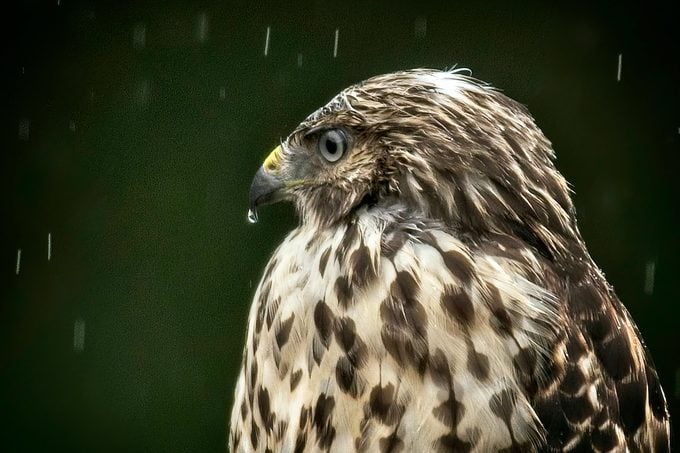
Birds around towns and farms may take shelter in porches or sheds. Resident birds in very rainy climates seem to get used to the conditions and may go on foraging as normal, except during the heaviest downpours.
Find out where birds go during a hurricane.
Where Do Birds Go When It Storms?
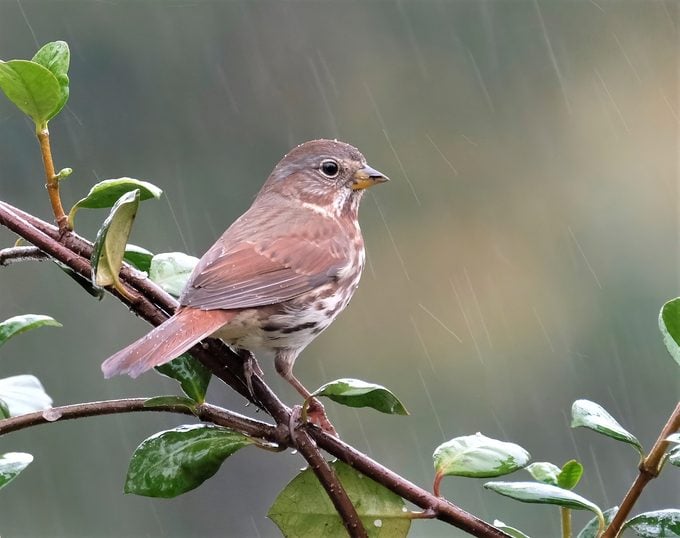
“What happens to birds during heavy storms? Do they know bad weather is approaching?” asks Lori Reiser of St. Augustine, Florida.
Just like people, animals seek shelter during extreme weather. It doesn’t matter if you’re dealing with a blizzard, lightning storm or heat wave—wild creatures need places to go. Birds recognize changes in air pressure, which are often signs that weather is about to change, according to the Kaufmans. If they sense an approaching storm, they tend to forage more, often coming to feeders for the easiest source of food.
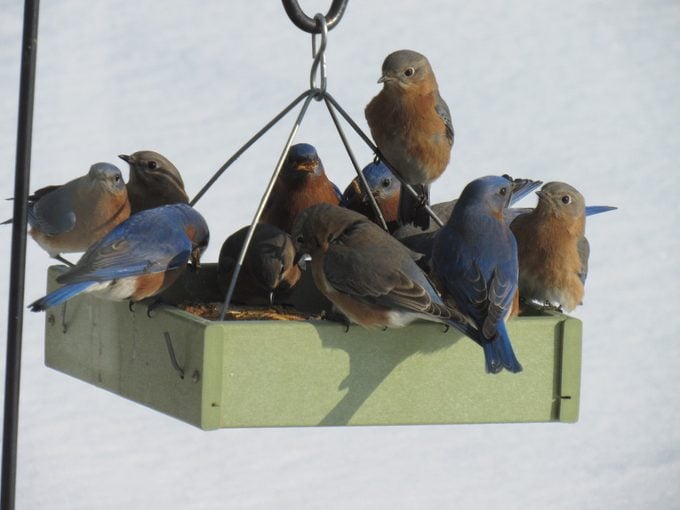
When bad weather hits, birds generally seek shelter from wind and rain in dense shrubs or thickets, next to heavy tree trunks, and on the downwind side of woods and forests. Cavity-nesting birds hunker down in nest boxes and natural cavities to ride out storms.
Providing this important component of habitat is a lot easier than you might think. Take a look at some of the ways you can help wildlife and birds when it rains or storms in your own backyard.
Learn where butterflies go when it rains.
Start With Plants for Protection for Birds in Storms
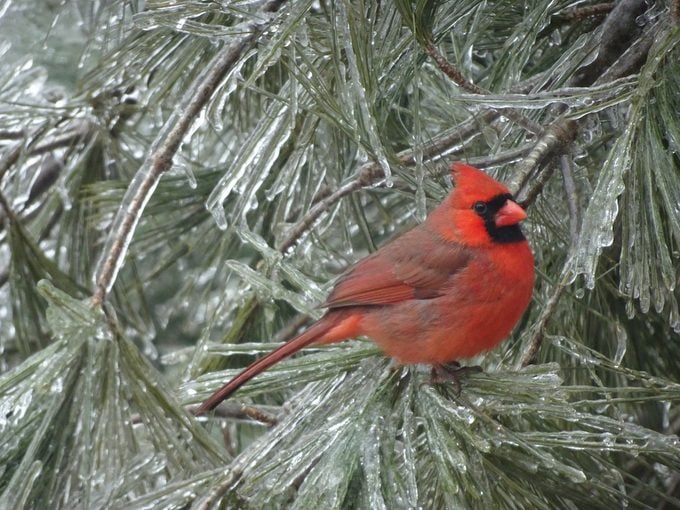
The same native plants that provide food for wildlife in the form of berries, seeds, nuts and nectar will do double duty and provide shelter if you plant them densely. Evergreens are particularly valuable, since their foliage remains green year-round. Here’s a good rule of thumb: The more plants you have and the more densely you plant them, the more protection you’ll be providing for wildlife and birds when it rains.
Group Shrubs Together
Imagine a bare expanse of lawn dotted with a few isolated shrubs—a typical landscape in lots of places. Not much shelter for wildlife, right? Now imagine those shrubs connected by patches of wildflowers, or even more shrubs, forming a living fence that birds and animals can use as a safe hiding place or corridor through the otherwise open landscape.
Check out the top 10 summer flowering shrubs for full sun.
Leave Dead Trees Standing for Cavity Nesters
Sometimes providing shelter means simply protecting or enhancing mature plantings that are already there. If you have large trees in your yard, don’t remove them. Even better, add smaller understory trees and shrubs to take advantage of vertical space, creating layers of shelter. Dead and dying trees, called snags, are particularly important. As snags decay, they lose branches and cavities form. Add that to the holes woodpeckers excavate, and you could have all sorts of animals taking up residence.
Make a Brush Pile for Wildlife
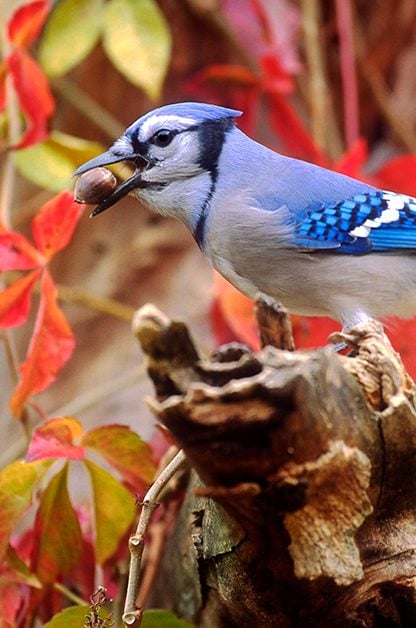
Beyond your plantings, you can also assemble simple structures that wildlife will use for refuge. Brush piles mimic fallen woody debris found in natural areas; build them by lining up a series of parallel logs, then layering successively smaller branches on top. This will give you a domelike structure filled with spaces that wildlife as large as foxes and as small as mourning cloak butterflies will take advantage of.
Check out 5 ways to create a bird-safe backyard.
Pile up Rocks
You can do the same thing with rocks by stacking smaller stones on and around bigger ones to create mini-caves and crevices. Try doing this along your property line to make a rock wall. Just be sure to stack the rocks without using mortar, which would eliminate those valuable hiding places.
Here’s how to create winter shelter for birds.
Put Up a Roosting Box for Shelter from Storms
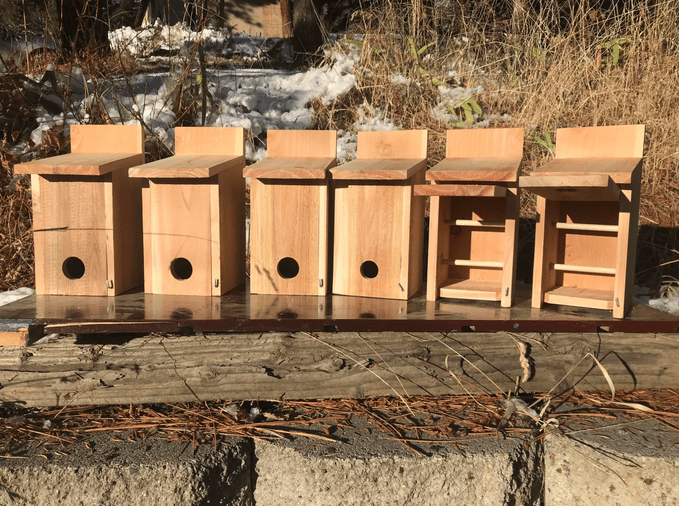
You can also buy or build special roosting boxes designed to provide instant shelter. These look like nesting boxes or birdhouses for birds, but they have entry holes toward the bottom to help the box retain heat in winter. They might even have perches on the inside to accommodate multiple animals. Some critter or another will use a roosting box in all seasons, including flying squirrels, tree frogs and songbirds like bluebirds, chickadees and titmice.
Learn how to make a DIY bluebird house.
Give Shelter to Bats
A bat house is really just another kind of roosting box. Built and mounted properly, it will entice the little flying mammals to take up residence in your yard. Remember, you have nothing to fear from bats. And they’ll help control insect pests!
